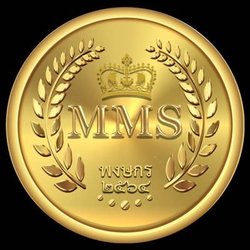Dash is an advanced form of cryptocurrency like Bitcoin. It is created and held electronically on your computer. There are no centralized controls over the ‘currency’, and they are generated not by a government or a bank, but by miners who are rewarded with new Dash when they ‘mine’ a block of Transactions. Dash is essentially just like Bitcoin, but it also has some improvements that allow it to solve some of the problems that have plagued Bitcoin for a while now.
How Does Dash Differ From Regular Currencies and Bitcoin?
Just like regular cash, and Bitcoin, Dash can be used to buy goods electronically. Like Bitcoin, Dash has no central authority controlling its distribution, inflation rate, or anything dealing with the currency. All of that is controlled by algorithms. Algorithms that are run on individual’s computer hardware which makes Dash completely decentralized.
Who Created It?
Dash was created from a fork of the Bitcoin Code by Evan Duffield in January of 2014. It was released as “XCoin” initially and later rebranded as DarkCoin in February of the same year. Finally, the words “Digital Cash” were shortened to just “Dash” in March of 2015. According to Evan Duffield, who implemented X11 and developed his cryptocurrency. He did this after coming to the realization that the Bitcoin devs would never accept his code. The reason being that the changes required to the core protocol would have been unacceptable to them. Dash Currently has a market Capitalization of $ 53,398,846, placing in the top 5 cryptocurrencies according to coinmarketcap. Further, in March of 2016 Dash took away 1% of all daily cryptocurrency trade volume.
DGGB – Decentralized Governance by BlockChain
Although there has been a lot of hype around The DAO – short for a Decentralized Autonomous Organization – Dash is the first of such a construction. It is a Sybil-attack-proof decentralized governance and funding system. This means that it is not possible to game the system by creating multiple pseudonymous nodes to gain more control over the network artificially than one user was intended to have. In this way, money can be spent in a decentralized fashion based on network consensus. Users submit proposals on community-owned sites and each masternode owner is given a single vote. Once a proposal gains the required network support, the funds are automatically disbursed when the next super block is released the following month. By March of 2016, the monthly budget for the system was almost $ 30k. According to Dashninja.pl, the next superblock on June 5th, 2016 will award ~7,329.26 which is roughly $ 59,660! These funds come from mining efforts as 10% of the mined Dash coins are set aside for DGBB proposals. The other 90% is split evenly between Dash miners and Dash Masternode operators – the guys who get to vote.
Issuance
As alluded to above, unlike traditional currencies, Dash’s issuance is not controlled by banks or other central authorities. It is instead ‘mined’ using distributed computing power. Further, unlike Bitcoin, which relies solely on the miner’s to support the network, Dash has a two-tiered network system supported equally by miners and operators of ‘masternodes’. Anyone can download the Dash software and support the network by running a ‘full node’. But Masternodes provide more services to the network than regular full nodes, and as such, they are incentivized through mining rewards as discussed above. Masternodes provide the backbone for the anonymization functions that are not present in Bitcoin transactions by default.
Masternodes are also expected to provide more services to the network in the future as the network is further developed. To become a masternode, a user must put 1000 Dash up as collateral. This Dash never leaves the user’s control; it is only meant to make it prohibitively expensive to gain control of a majority of masternodes. The owner can at any time remove, spend or do otherwise with the funds, though this will disable their status as a masternode and prevent them from receiving mining rewards.
From Where Does Dash Derive Its Value?
Just like bitcoin, and unlike traditional currencies which are backed by fiat, or commodities like oil, Dash is fully decentralized and its value comes not from tangible assets but from mathematics. There is a formula or algorithm that dictates how and when Dash are created. The software is open-source, so anyone can check it, and anyone can run it.
Core Features
Since Dash is a fork of the Bitcoin code, it still shares many of the same features as bitcoin, while improving on some of them, like the Masternode system mentioned above. As a matter of fact, another benefit of the Masternode system is the way it allows for network consensus on the direction and governance of Dash as a whole. This is in addition to its benefit in anonymizing transactions and otherwise supporting the network. As proof of this, while the Bitcoin community has been debating the blocksize issue for the better part of two years now, in early 2016 Dash managed to solve the same problem in 24 hours. The masternode owners voted to raise the blocksize of Dash to 2 MB. Contrast this smooth process with the PR-nightmare of Bitcoin’s attempt at the same; often resulting in heated online wars-of-words.
To sum up the advantages and features of Dash:
- It is decentralized. As explained above, Dash has no central authority in control of it. No one to shut off your funds or disable your account. You literally become your own bank. This is an incredibly powerful proposition.
- It is very easy to use and get involved in the Dash project. Whether as a node operator, Masternode operator, miner, or software developer.
- It is truly anonymous. Bitcoin is only pseudonymous, which means that there is not necessarily a direct link to you, but it’s possible to trace transactions and link them to an individual. In Dash; however, transactions are joined with others in a way that makes it impossible to deanonymize them.
- Transaction fees are tiny. Unlike like Bitcoin that is recording high transactions recently, Dash is easy and inexpensive to transact with.
- It is very fast. Unlike Bitcoin, Dash generates blocks four times as quickly, every 2 minutes and 30 seconds as opposed to Bitcoin’s 10 minutes. Which means that, even without increasing the blocksize limit to two MBs, the Dash network could’ve handled four times the transaction volume of Bitcoin.
- Finally, like Bitcoin, Dash transactions cannot be reversed unless the recipient sends them back. Once they’re sent, they’re sent.



















